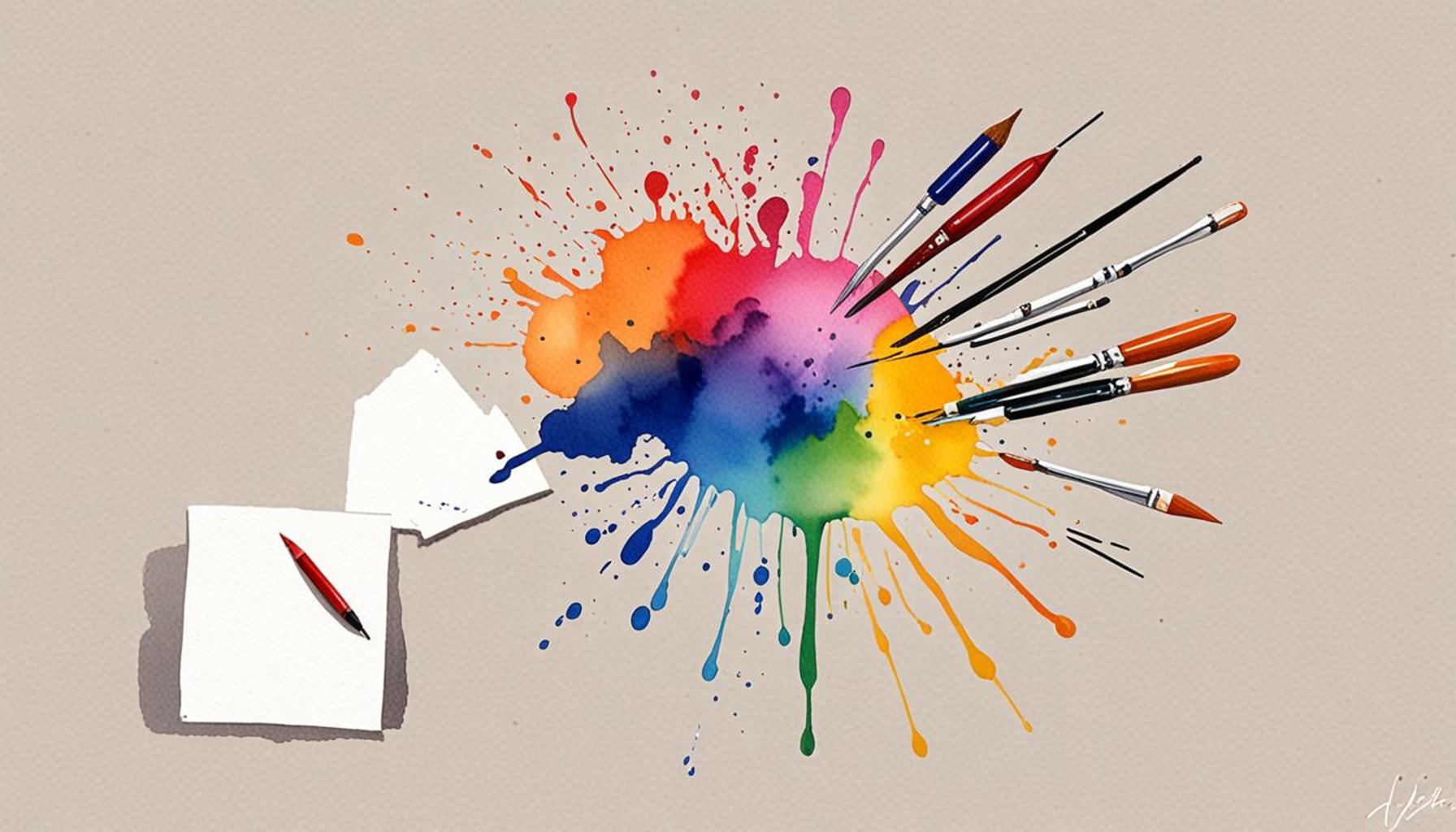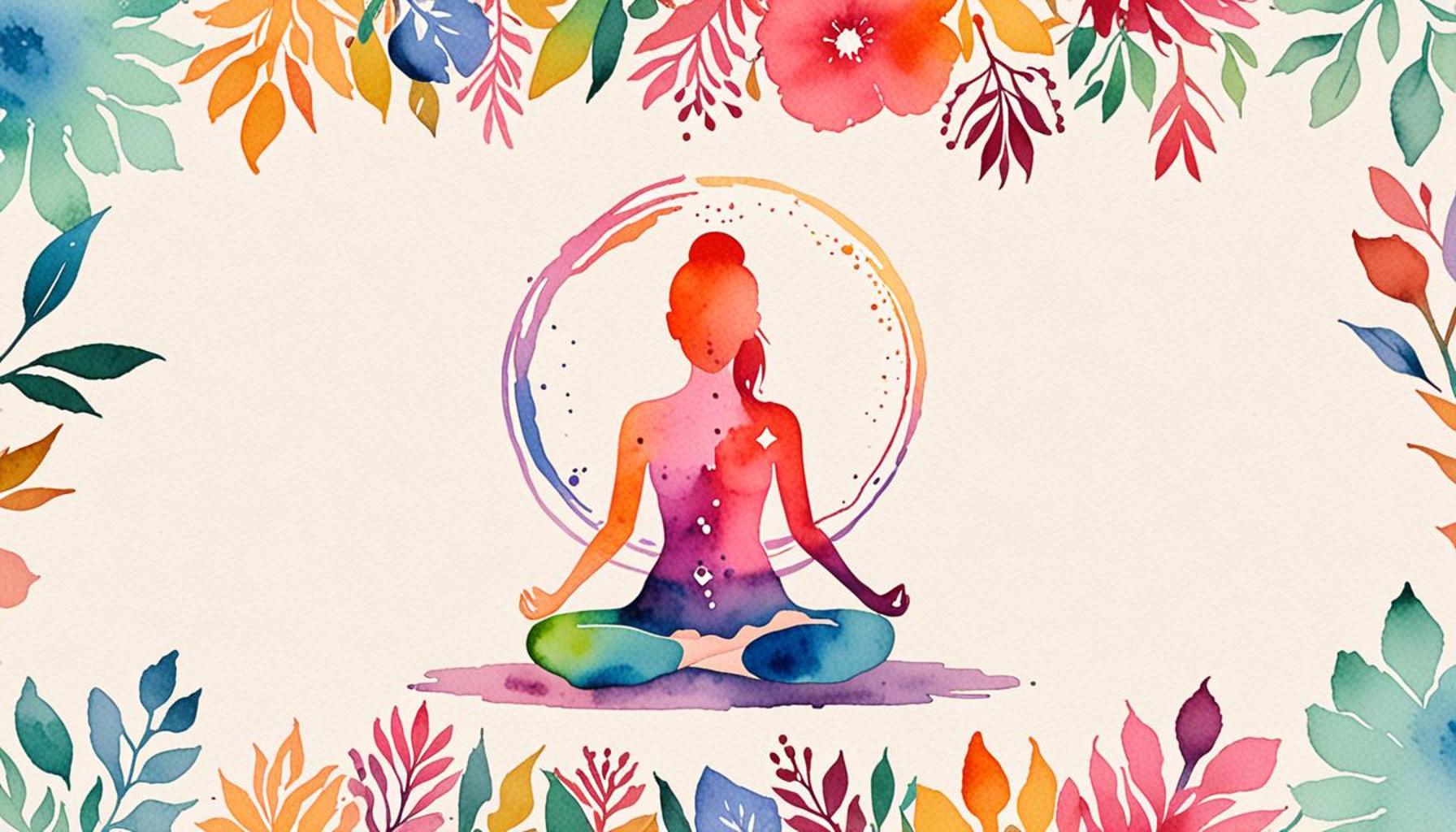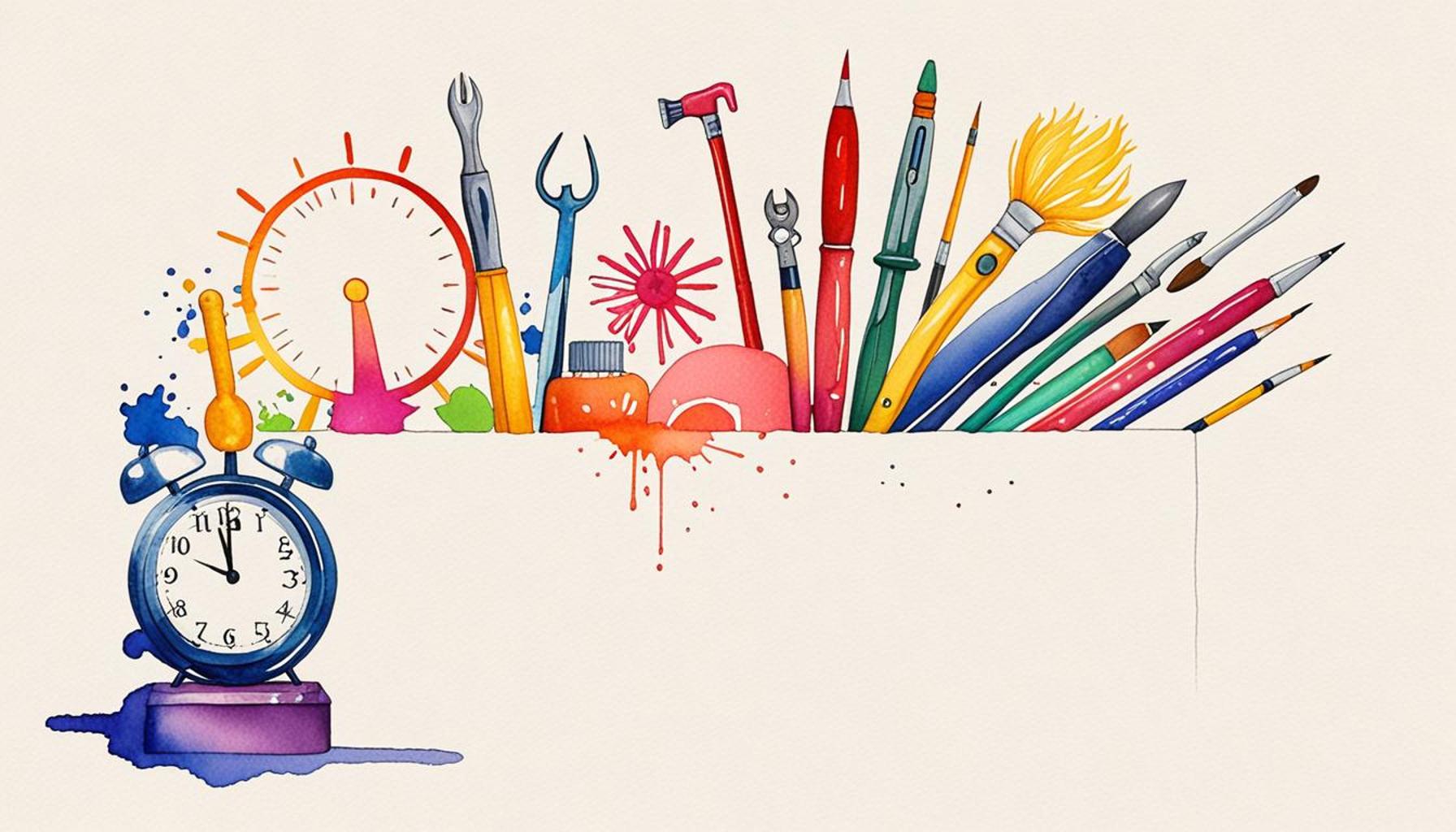Less is More: How to Reduce Distractions and Increase Productivity with Minimalism

Discover the Power of Minimalism
In a world filled with constant distractions, achieving higher productivity can feel nearly impossible. Overwhelmed by endless notifications, cluttered workspaces, and competing priorities, many people are seeking effective solutions. The pursuit of a more focused and productive life often leads individuals to challenge the status quo of their daily routines and living spaces. This modern struggle highlights the growing interest in minimalism—a philosophy that emphasizes simplicity and intentional living.
Embracing minimalism offers a pathway out of the chaos by promoting a more structured approach to both physical and psychological environments. By adopting this framework, you can:
- Eliminate distractions from your workspace, which can significantly enhance focus. Imagine a workspace stripped of unnecessary gadgets, papers, and decor. This clarity can prevent your mind from wandering and keep you goal-oriented.
- Focus your energy on essential tasks, sidestepping the urge to multitask. Studies have shown that multitasking can reduce productivity by as much as 40%. With a minimalist approach, you can prioritize one task at a time, ensuring deeper engagement and more robust outcomes.
- Enhance your mental clarity through a simplified environment where each item serves a purpose or brings joy. The idea is to create a space that reflects your values and aspirations rather than a cluttered reflection of consumerism.
Interestingly, adopting a minimalist lifestyle isn’t solely about reducing physical possessions; it’s a comprehensive strategy that rethinks how you allocate your time and resources. Research shows that minimalism can:
- Lead to improved mental health by reducing stress and anxiety, which are often exacerbated by cluttered surroundings. A serene environment can translate to a more peaceful mind.
- Boost creative problem-solving abilities. Clutter can impede cognitive processes, and by clearing your space, you open the door for innovative thinking and new ideas to flourish.
- Enhance overall well-being through intentional choices that prioritize quality over quantity in every aspect of life, from relationships to material possessions. This focus can lead to a more fulfilling and purpose-driven existence.
Practical strategies for integrating minimalism into your life include starting small—perhaps by decluttering one room or drawer. Gradually, you can expand this practice throughout your home and work environments. As you navigate through this article, you will uncover more insights and specific tips on how to conquer distractions and embrace lasting productivity. Join the movement towards simplicity, and unlock the numerous benefits of living and working with less. The journey may not be easy, but the rewards could change the way you approach both work and life forever.
DISCOVER MORE: Click here to delve into mindfulness and decluttering
Understanding the Benefits of a Minimalist Mindset
To grasp the full impact of minimalism on productivity, it is vital to appreciate how a minimalist mindset transcends mere decluttering. It embodies a powerful philosophy that prioritizes simplicity and conscious decision-making. This paradigm shift allows individuals to cultivate a lifestyle where every item, task, and thought can be examined for its true value and relevance.
One of the core tenets of minimalism is the idea of intentionality. This means being deliberate about what we choose to bring into our lives, both physically and mentally. By aligning our possessions and activities with our core values and personal goals, we can create a clearer path toward achieving what truly matters. A survey conducted by the National Institute for Occupational Safety and Health showed that increased workplace distractions can contribute to lowered productivity levels. Thus, it becomes essential to put forth an effort to minimize distractions as a means to enhance focus.
Strategies to Create a Minimalist Workspace
Transforming your workspace into a haven of clarity can significantly bolster productivity. Here are several effective strategies to promote a minimalist workspace:
- Declutter regularly: Set aside time weekly to assess your workspace. Remove items that no longer serve a purpose, whether they are old documents, broken supplies, or outdated technology. This routine helps maintain a clean and organized environment.
- Digital minimalism: Just as physical clutter can hinder productivity, digital clutter can pull your attention away from important tasks. Unsubscribe from unnecessary emails, delete unused apps, and organize your files to streamline your digital experience.
- Utilize open-space concepts: An open and spacious layout can promote a sense of calm and reduce distractions. If possible, position your desk in a way that minimizes visual clutter—consider facing towards a plain wall or large window to foster a more productive atmosphere.
- Incorporate the ‘one in, one out’ rule: For every new item you bring into your workspace, consider removing one existing item. This approach not only helps control clutter but also assists in evaluating the importance of each item in your life.
By implementing these strategies, you take the first steps toward cultivating a minimalist environment that supports sustained focus and creativity. This deliberate approach fosters a stimulating workspace where potential can flourish, and distractions fade into the background.
As you delve deeper into the nuances of minimalism’s impact on productivity, consider integrating these practices into your daily routine. Not only will you reduce distractions, but you will also experience a newfound sense of empowerment and clarity that allows you to thrive in both work and life.
Embracing Minimalism in Your Workspace
One of the most significant aspects of minimalism is its application to the workspace. Reducing clutter not only helps in keeping your environment tidy but also promotes a mindset conducive to productivity. Studies have shown that a cleaner workspace can lead to higher efficiency and improved focus. Organizing your workspace involves eliminating unnecessary items and simplifying your tools, which can significantly enhance your workflow.
The Digital Minimalism Movement
Digital distractions can be just as overwhelming as physical ones. Embracing digital minimalism entails streamlining your online presence and usage of technology. This can include decluttering your email inbox, reducing social media engagement, and utilizing productivity tools that promote focus. By adopting these strategies, you can mitigate the noise of digital distractions and concentrate on what truly matters in your work.
Mindfulness Practices
Another critical element of minimalism is mindfulness. Incorporating mindfulness practices, such as meditation or simple breathing exercises, can create mental space that fosters clarity and creativity. These practices encourage individuals to be present, allowing for enhanced engagement with tasks and minimized tendency to drift into distractions. Regularly practicing mindfulness can lead to improved decision-making, as clarity of thought enhances productivity.
Minimalistic Goal Setting
Additionally, setting minimalistic goals is an effective strategy for productivity. Instead of overwhelming yourself with numerous objectives, honing in on a few significant goals can lead to greater achievement. By prioritizing these goals and focusing your energy on completing them, you create a sense of accomplishment that fuels motivation and increases your overall productivity.
| Category | Details |
|---|---|
| Physical Workspace | Eliminates distractions; encourages focus on tasks |
| Digital Declutter | Streamlines technology use; fosters concentration |
| Mindfulness Techniques | Enhances mental clarity; reduces stress |
| Minimalistic Goals | Focuses energy on key objectives; boosts motivation |
Incorporating these elements into your daily routine can significantly transform your approach to productivity. The minimalist movement is not just about reducing physical items; it’s also a holistic approach to streamlining various aspects of life. Embracing a minimalist philosophy means continually seeking simplicity in all areas, leading to a more productive and fulfilling existence.
DISCOVER MORE: Click here to learn how mindfulness can enhance your space
Fostering a Minimalist Mindset in Daily Life
Beyond the workspace, embracing minimalism involves adopting mindsets and habits that extend to all facets of life. This transformative approach can provide a clearer version of oneself, allowing individuals to hone their focus on what truly enhances their well-being and productivity. The key lies in shaping daily habits that reflect a commitment to simplicity while actively fighting against the distractions prevalent in modern society.
Streamlining Daily Routines
Efficient daily routines play an essential role in maximizing productivity. Here are several methods to simplify and enhance your routines through minimalism:
- Create a simplified morning routine: Mornings set the tone for the day. Streamline your morning by identifying core activities that energize you, whether it’s a meditation practice, a quick workout, or a nourishing breakfast. By focusing on essential tasks, you can reduce decision fatigue and start your day with a sense of purpose.
- Meal preparation: Planning and preparing meals can eliminate decision-making during the week, leading to healthier choices and less time spent pondering what to eat. Consider simplifying your meal options by creating a weekly menu that includes nutritious, straightforward dishes, allowing you to concentrate on your work and responsibilities without unnecessary distractions.
- Prioritize your to-do list: Rather than overwhelming yourself with an exhaustive list of tasks, aim for a smaller, prioritized list of three to five critical tasks for the day. This approach aligns with the minimalist philosophy of focusing on quality over quantity, providing a more manageable framework for success.
By adopting these streamlined routines, individuals can enhance their overall productivity and reduce distractions stemming from unnecessary complexity in their daily lives.
Mindfulness as a Minimalist Practice
Minimalism is inherently linked to mindfulness, where being present and intentional about thoughts and actions takes precedence. Adopting mindfulness practices can help individuals become more attuned to the distractions that detract from their productivity. Here are some ways to cultivate mindfulness in daily life:
- Engage in regular meditation: Studies have shown that mindfulness meditation can improve concentration, reduce stress, and foster emotional well-being. Setting aside a few minutes each day for meditation can sharpen focus and create a sense of calm amidst the chaos of life.
- Practice digital detox: In an age dominated by technology, taking breaks from screens is essential to maintaining focus. Implement designated tech-free times throughout your day, such as during meals, an hour before bed, or while engaging in hobbies. This practice allows for mental clarity and a respite from the constant barrage of notifications.
- Embrace gratitude journaling: Keeping a daily gratitude journal can shift your focus away from What you lack and highlight the positives in your life. This mental shift fosters a minimalist mindset that appreciates what you already have rather than craving more, contributing to decreased distractions and increased productivity.
By integrating these mindfulness practices into your routine, you can cultivate a deeper understanding of your environment and the distractions within it, thereby fostering a lifestyle that prioritizes intentionality and focus. Embracing minimalism in daily life not only enhances productivity but also nurtures a profound sense of awareness and clarity, allowing individuals to navigate their personal and professional spheres with purpose and ease.
DISCOVER MORE: Click here to learn how password management can simplify your life
Embracing Minimalism for a Productive Future
In a world overflowing with distractions and overwhelming choices, the principle of minimalism serves as a lighthouse guiding us towards a more focused and productive life. Through the integration of simplified daily routines and mindful practices, individuals can reclaim their time and energy, setting the stage for enhanced creativity and clarity. Implementing a minimalist approach encourages not only the physical decluttering of our spaces but also the mental liberation from unnecessary obligations and incessant digital noise.
Ultimately, minimalism is about recognizing the value of intentionality. When we strip away the excess, we create space for what truly matters—whether that be meaningful work, nurturing relationships, or personal growth. This pursuit of simplicity can foster resilience against the rapid pace of modern life, enabling a profound re-evaluation of our priorities. As we consciously choose to focus on fewer but significant goals, we cultivate a sense of accomplishment and progress that propels us forward.
As you embark on your journey towards a minimalist lifestyle, remember that every small change contributes to a larger transformation. Questions such as What adds value to my life? and What distractions can I eliminate? are essential in carving out a path that leads to greater productivity and fulfillment. By embracing the mantra of “less is more,” you are empowered to create a life that is not only efficient but also deeply rewarding—a life where every task, interaction, and moment enhances your well-being and purpose.



